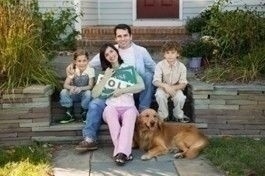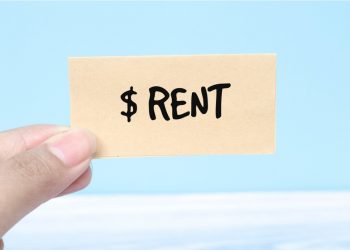 Existing-home sales edged up in January, while a seller’s market is developing and home prices continue to rise steadily above year-ago levels, according to the National Association of REALTORS®. Sales rose in every region but the West, which is the region most constrained by limited inventory.
Existing-home sales edged up in January, while a seller’s market is developing and home prices continue to rise steadily above year-ago levels, according to the National Association of REALTORS®. Sales rose in every region but the West, which is the region most constrained by limited inventory.
Total existing-home sales, which are completed transactions that include single-family homes, townhomes, condominiums and co-ops, increased 0.4 percent to a seasonally adjusted annual rate of 4.92 million in January from a downwardly revised 4.90 million in December, and are 9.1 percent above the 4.51 million-unit pace in January 2012.
Lawrence Yun, NAR chief economist, said tight inventory is a major factor in the market.
“Buyer traffic is continuing to pick up, while seller traffic is holding steady,” he says. “In fact, buyer traffic is 40 percent above a year ago, so there is plenty of demand but insufficient inventory to improve sales more strongly. We’ve transitioned into a seller’s market in much of the country.”
Total housing inventory at the end of January fell 4.9 percent to 1.74 million existing homes available for sale, which represents a 4.2-month supply at the current sales pace, down from 4.5 months in December, and is the lowest housing supply since April 2005 when it was also 4.2 months.
Listed inventory is 25.3 percent below a year ago when there was a 6.2-month supply. Raw unsold inventory is at the lowest level since December 1999 when there were 1.71 million homes on the market.
“We expect a seasonal rise of inventory this spring, but it may be insufficient to avoid more frequent incidences of multiple bidding and faster-than-normal price growth,” Yun explains.
The national median existing-home price for all housing types was $173,600 in January, up 12.3 percent from January 2012, which is the 11th consecutive month of year-over-year price increases; that last occurred from July 2005 to May 2006. The January gain is the strongest since November 2005 when it was 12.9 percent above a year earlier.
Distressed homes– foreclosures and short sales– accounted for 23 percent of January sales, down from 24 percent in December and 35 percent in January 2012. Fourteen percent of January sales were foreclosures and 9 percent were short sales. Foreclosures sold for an average discount of 20 percent below market value in January, while short sales were discounted 12 percent.
According to Freddie Mac, the national average commitment rate for a 30-year, conventional, fixed-rate mortgage rose to 3.41 percent in January from a record low 3.35 percent in December; it was 3.92 percent in January 2012.
NAR President Gary Thomas says homes are selling faster. “The typical home is selling nearly four weeks faster than it did a year ago,” he said. “In this environment, REALTORS® can help buyers strike a balance between moving quickly and protecting their interests, such as making offers contingent upon a satisfactory home inspection and obtaining a loan; of course, a loan pre-qualification may help too.”
The median time on market for all homes was 71 days in January, down from 73 days in December and is 28.3 percent below 99 days in January 2012. Short sales were on the market for a median of 94 days, while foreclosures typically sold in 47 days and non-distressed homes took 75 days; 31 percent of all homes sold in January were on the market for less than a month.
First-time buyers accounted for 30 percent of purchases in January, unchanged from December; they were 33 percent in January 2012.
All-cash sales were at 28 percent of transactions in January, down from 29 percent in December and 31 percent in January 2012. Investors, who account for most cash sales, purchased 19 percent of homes in January, down from 21 percent in December and 23 percent in January 2012.
Single-family home sales increased 0.2 percent to a seasonally adjusted annual rate of 4.34 million in January from 4.33 million in December, and are 8.5 percent above the 4.00 million-unit level in January 2012. The median existing single-family home price was $174,100 in January, up 12.6 percent from a year ago.
Existing condominium and co-op sales rose 1.8 percent to an annualized pace of 580,000 in January from 570,000 in December, and are 13.7 percent higher than the 510,000-unit level a year ago. The median existing condo price was $169,600 in January, up 9.4 percent from January 2012.
Regionally, existing-home sales in the Northeast increased 4.8 percent to an annual rate of 650,000 in January and are 12.1 percent above January 2012. The median price in the Northeast was $230,500, up 2.4 percent from a year ago.
Existing-home sales in the Midwest rose 3.6 percent in January to a pace of 1.16 million and are 17.2 percent higher than a year ago. The median price in the Midwest was $131,800, which is 8.6 percent above January 2012.
In the South, existing-home sales increased 1.0 percent to an annual level of 1.96 million in January and are 14.0 percent above January 2012. The median price in the South was $152,100, up 13.4 percent from a year ago.
Existing-home sales in the West fell 5.7 percent to a pace of 1.15 million in January and are 5.7 percent below a year ago. The median price in the West was $239,800, which is 26.6 percent above January 2012.
For more information, visit www.realtor.org.
For additional commentary and consumer information, visit www.houselogic.com and http://retradio.com.










